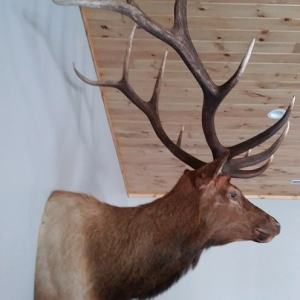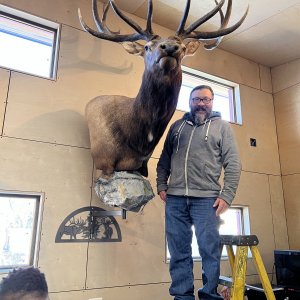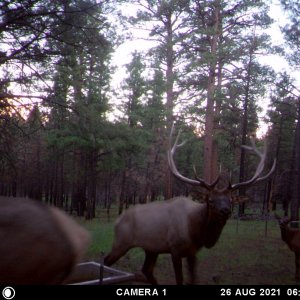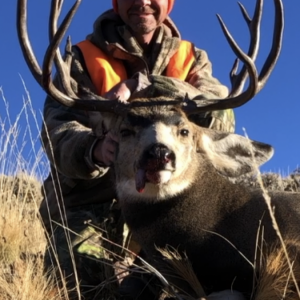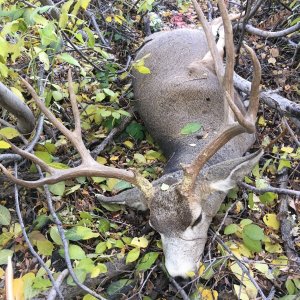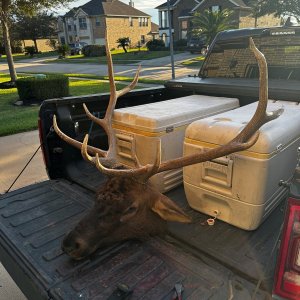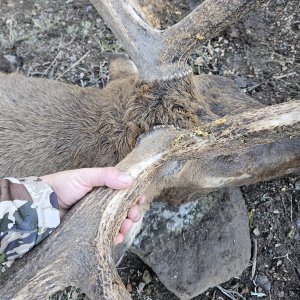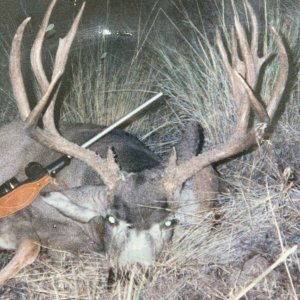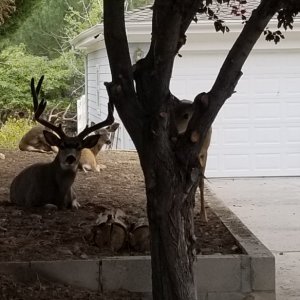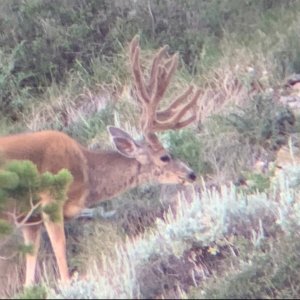T
TFinalshot
Guest
Symposium aims to spur oil, gas discussion
By JO DEE BLACK
Tribune Business Editor
The executive director of the Wyoming Wildlife Federation has a simple statement for conservationists, sportsmen, environmental groups and energy developers when it comes to conflicting interests and past disagreements.
"Get over it and work together," Walt Gasson told approximately 80 people in attendance at a day-long symposium Saturday at the Best Western Heritage Inn. "There are no enemies in this game. Everybody is a potential partner."
The event, titled "Our Changing Landscape, Oil and Gas Development: Impacts to Wildlife, Hunting and Angling," was put together by the MWF.
The intent was to disseminate information about the impact of oil and gas development on wildlife and the landscape and to let the public know about opportunities to get involved, said Chris Marchion, MWF president."No one here today was saying don't develop oil and gas," he said. "It's a question of how to do it right. We want people to get engaged in that discussion instead of having them sit on the sidelines and watch."
Of Montana's 94 million acres, 32 million are managed by the U.S. Bureau of Land Management. There are oil and gas leases on 4.3 million of those acres and production is occurring on 780,000 acres.
It's the BLM land that Darryl Olson, a board member of MWF from Shepherd, is concerned about.
"Hunting is part of the heritage of this state," he said. "As the general population is losing access to private lands, we have more people recreating on public land and that's creating the friction."
Fossil fuel development can coexist with conservation interests, Olson said, as long as there is strong regulatory enforcement and pressure from the public.
"Industry needs to use the best technology and exclude areas that are critical wildlife habitat," Olson said.
Wildlife, conservation and sportsmen groups need to put aside their differences and work together on the issue of oil and gas development on public lands, said Ron Moody of Lewistown, a BLM advisory council member.
"We've been divided on issues such as ATV use on public lands," Moody said. "We have to be united on this."
An important partner that needs to be at the table is the oil and gas industry, said Dave Galt, executive director of the Montana Petroleum Association.
"Our industry is interested in developing resources and doing it right," he said.
State regulations require developers to put up bonds and mitigate environmental impacts, said Pat Montalban, who represents the Northern Montana Oil and Gas Association.
"Most of the activity in our area is on private land and the landowners in that area want development," he said. "There's been a drought in some parts of Glacier and Pondera counties for 10 years. Those communities need the revenue development provides."
Fallon County Commissioner Don Rieger made the long trip from Baker to hear the information presented at the symposium. Fallon County has oil and natural gas wells and a new wind farm. Taxes and fees from energy development are a big part of the county's revenues, he said.
"It's been very educational to hear views from the other side of the coin," Rieger said of the event.
Gov. Brian Schweitzer, who delivered the opening remarks Saturday morning, urged the groups to make public access to land a priority in their efforts.
"Along with habitat protection and wildlife management, you need to make sure access is critical," he said.
That was welcome advice for Mary Jones, who works with the Friends of the Missouri Breaks Monument.
"The point of the monument is to preserve open land and the landscape for public use," she said.
Although there isn't oil and gas activity in the monument, there's potential for gas drilling immediately outside the boundary, which is a concern, she said.
"I don't know how much or how little development impacts wildlife and that's why I'm here today," she said. "I'm here to listen to experts."
Some of those experts included wildlife biologists, who presented studies of the behavior of big game and grouse populations near existing oil and gas developments.
"I'm not against energy development," Gasson said.
"We need to build relationships and work together. If we don't deal with these challenges proactively, we could lose the home place," he said, showing a Power Point slide of his 6-year-old grandson holding up a trout. "And that's what haunts me."
By JO DEE BLACK
Tribune Business Editor
The executive director of the Wyoming Wildlife Federation has a simple statement for conservationists, sportsmen, environmental groups and energy developers when it comes to conflicting interests and past disagreements.
"Get over it and work together," Walt Gasson told approximately 80 people in attendance at a day-long symposium Saturday at the Best Western Heritage Inn. "There are no enemies in this game. Everybody is a potential partner."
The event, titled "Our Changing Landscape, Oil and Gas Development: Impacts to Wildlife, Hunting and Angling," was put together by the MWF.
The intent was to disseminate information about the impact of oil and gas development on wildlife and the landscape and to let the public know about opportunities to get involved, said Chris Marchion, MWF president."No one here today was saying don't develop oil and gas," he said. "It's a question of how to do it right. We want people to get engaged in that discussion instead of having them sit on the sidelines and watch."
Of Montana's 94 million acres, 32 million are managed by the U.S. Bureau of Land Management. There are oil and gas leases on 4.3 million of those acres and production is occurring on 780,000 acres.
It's the BLM land that Darryl Olson, a board member of MWF from Shepherd, is concerned about.
"Hunting is part of the heritage of this state," he said. "As the general population is losing access to private lands, we have more people recreating on public land and that's creating the friction."
Fossil fuel development can coexist with conservation interests, Olson said, as long as there is strong regulatory enforcement and pressure from the public.
"Industry needs to use the best technology and exclude areas that are critical wildlife habitat," Olson said.
Wildlife, conservation and sportsmen groups need to put aside their differences and work together on the issue of oil and gas development on public lands, said Ron Moody of Lewistown, a BLM advisory council member.
"We've been divided on issues such as ATV use on public lands," Moody said. "We have to be united on this."
An important partner that needs to be at the table is the oil and gas industry, said Dave Galt, executive director of the Montana Petroleum Association.
"Our industry is interested in developing resources and doing it right," he said.
State regulations require developers to put up bonds and mitigate environmental impacts, said Pat Montalban, who represents the Northern Montana Oil and Gas Association.
"Most of the activity in our area is on private land and the landowners in that area want development," he said. "There's been a drought in some parts of Glacier and Pondera counties for 10 years. Those communities need the revenue development provides."
Fallon County Commissioner Don Rieger made the long trip from Baker to hear the information presented at the symposium. Fallon County has oil and natural gas wells and a new wind farm. Taxes and fees from energy development are a big part of the county's revenues, he said.
"It's been very educational to hear views from the other side of the coin," Rieger said of the event.
Gov. Brian Schweitzer, who delivered the opening remarks Saturday morning, urged the groups to make public access to land a priority in their efforts.
"Along with habitat protection and wildlife management, you need to make sure access is critical," he said.
That was welcome advice for Mary Jones, who works with the Friends of the Missouri Breaks Monument.
"The point of the monument is to preserve open land and the landscape for public use," she said.
Although there isn't oil and gas activity in the monument, there's potential for gas drilling immediately outside the boundary, which is a concern, she said.
"I don't know how much or how little development impacts wildlife and that's why I'm here today," she said. "I'm here to listen to experts."
Some of those experts included wildlife biologists, who presented studies of the behavior of big game and grouse populations near existing oil and gas developments.
"I'm not against energy development," Gasson said.
"We need to build relationships and work together. If we don't deal with these challenges proactively, we could lose the home place," he said, showing a Power Point slide of his 6-year-old grandson holding up a trout. "And that's what haunts me."

